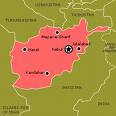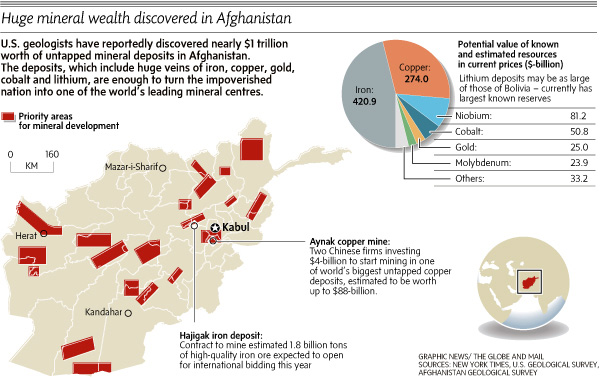The Pentagon’s Map of Afghanistan: An Eldorado of Mineral Wealth and Natural Resources

According to the media, The Afghanistan Papers released in early December 2019 by the Pentagon point to ” US dysfunction” ‘We did not know what we were doing’?
Nonsensical. They knew what they were doing. The object of US wars of aggression consists in appropriating the wealth of victim nations.
Article of relevance to an understanding of America’s ongoing military and economic agenda in Afghanistan as well as its confrontation with Russia and China.
First published in August 2012 (translated from Russian)
****
Curious information surfaced in the media [2012] – based on space reconnaissance, the US Department of Defense put together a map of Afghanistan showing in detail the country’s mineral riches which, as it transpired, may be quite impressive.
The fact that Afghanistan sits on a wealth of (strategic) natural resources was recognized indirectly back in 2010 when the Afghan ministry of mines rolled out a $1b (!) estimate of what the country might have, and The New York Times quoted a source in the US Administration as saying that Afghanistan’s list of reserves included copper, gold, cobalt, and even lithium on which the present-day high tech industry is heavily dependent.
A Pentagon memo actually described Afghanistan’s potential lithium holdings (used to make batteries) as big enough to make it the “Saudi Arabia of lithium”.
Somehow, the news flew below the radars of most watchers worldwide.
It must be taken into account that the areas used for poppy in Afghanistan expanded dramatically since the Western coalition invaded the country with an anti-terrorist mission and brought down the Taliban rule.
At the moment, millions of Afghans are involved in poppy farming and processing or in heroin trafficking. A year after the advent of the Western coalition, Afghanistan entered the world stage as a heroin monopoly, with approximately 90% of the global supply of opium.
Citing the above claims, in the 2000s Washington dropped Afghanistan from the narcotics blacklist and lifted the relevant sanctions. The US President said the step was in the US national interest.
Actually, Soviet scientists discovered decades earlier that the soils of Afghanistan contained ample mineral resources. Among those, for example, are precious and semiprecious stones: samples of the Sar-e-Sang District Lazurite, whose quality craftsmen praise as exemplary, were found even in Pharaohs’ tombs and during the Troy excavations. The emerald deposit unsealed back in the 1970s in the Panjshir Province ranks with the world’s largest, with gems comparable in quality to the acclaimed ones mined in Columbia.
Moreover, the Soviets were aware of the existence of Uranium reserves in Afghanistan – in Gen. A. Lyakhovsky’s account presented in his Tragedy and Honor in Afghanistan, the threat that the Uranium would be grabbed by Pakistan and Iran to build nuclear weapons was cited as an argument in favor of the future Soviet invasion at a pivotal December 8, 1979 meeting personally chaired by L.I. Brezhnev.
The Soviet explorations which were carried out in Afghanistan till the late 1980s showed that Afghanistan was extremely rich in various types of ores, with the resources hitherto untapped as the country had never been colonized.
The Aynak copper deposit is the biggest in Eurasia, and the Hadjigek iron ore in the proximity of Kabul is believed to be the top one in South Asia. Pegmatite reserves usable as sources of rubies, Beryl, and seldom-found gems – kunzite and hiddenite – are located east of Kabul. Pegmatite fields can, furthermore, serve to derive Beryllium (estimatedly, the corresponding reserves are the biggest known up to date with a total of over 73,500 tons), Lithium, Tantalum, and Niobium, the substances steady demand for which is pressed by the high tech sector along with the nuclear and aerospace industries.
The Pentagon, therefore, confirmed the earlier Soviet findings about the reserves of precious metals, ores, sulfur, Lazurite, Baryte, Celestine, etc. in Afghanistan, and actually went further, systematically compiling a map of the deposits.


